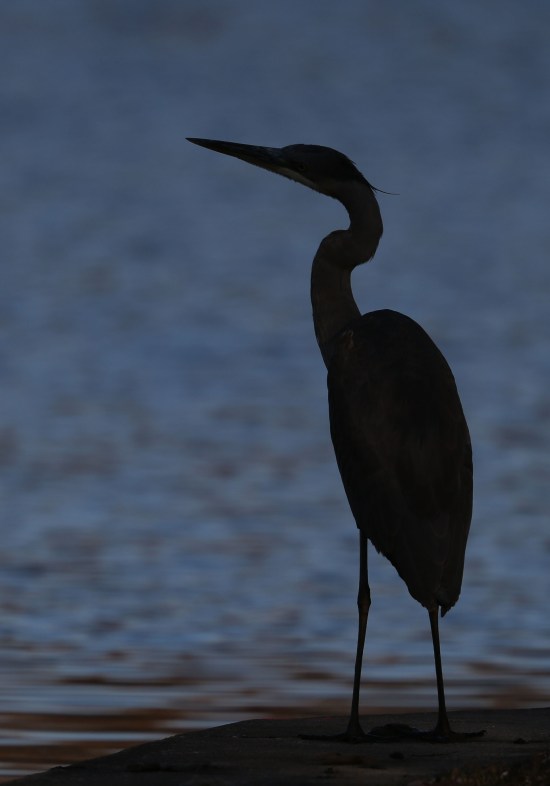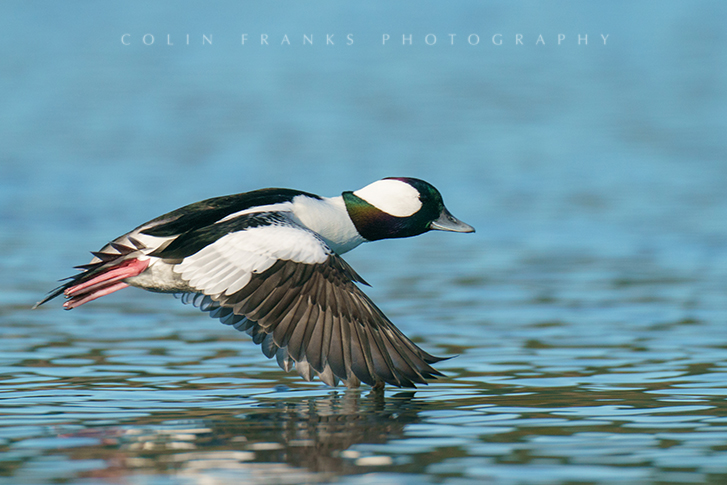We love our birds, and that’s an understatement—from 8-foot Big Bird to thumb-sized hummingbirds. Speaking of “hummers,” here’s a male Ruby-throat captured by talented Louisiana-based photographer Roberta “Birdie” Davidson. Roberta is a lady for whom the world disappears when she gets behind her camera. I’ll bet the world also disappears when she gets behind her binocs.

Now, if we’re not “bird lovers” as such—and I’ll acknowledge many aren’t—we at least notice them and are intrigued by them. I made that point recently to Katherine Hafner, a Virginian-Pilot staff writer who was interviewing me for an article about the Norfolk, Virginia winter crow roost. I told her that interest in birds is universal, a proposition for which there’s more than enough evidence.
Winter Crow Roosts
I not only told her about the roost here in Southeast Virginia, a roost about which I didn’t yet have firsthand knowledge, but I mentioned ones in New Carrollton, Maryland (no link, sorry), in Lancaster, Pennsylvania, and in Lawrence, Massachusetts. I also told her that there’s been a slow transition in the U.S. from rural to urban winter roosts and that crow numbers may be growing, in part, because of these roosts.
Here’s a fun crow shot that I sent her. Yes, I did take it using my usual camera settings: back button focus, AI Servo (Autofocus-Continuous) and burst mode. It’s not an especially good shot, but it does tell a story. Always try to tell stories.

I’d mentioned to her that crows spend the day foraging, that they’re omnivores—and big McDonald’s fans—and that the presence of human-provided food resources, a.k.a. food waste and trash, could be one reason why crows have established these urban roosts. I also mentioned that cities are warmer—think: heat-absorbing buildings and pavement—and that they provide greater safety from both avian predators and human hunters. This reminds me of something I wrote in a previous blog about Canada Geese: “They’re thriving in urban and suburban environments where there’s plenty of food and open water, and where they can easily escape what few predators they have there.” It’s interesting how we humans have aided these bird species.
The Norfolk, Virginia Winter Crow Roost
Now, a few days after the interview and just before sunset on 12/21/19, my wife and I decided to visit the Norfolk, Virginia winter crow roost for the first time. The destination for our survey: a corner of the bustling pre-holiday Costco parking lot. After our visit, I wrote the following to my “Birding Virginia” Facebook friends: “There really IS a winter crow roost @ the I-64/I-264 interchange in Norfolk, Virginia. My wife and I went to see it for the first time tonight. We saw thousands of crows. It was a little like watching fall- migrating Broad-winged Hawks stream past Hawk Mountain or Mount Wachusett. Here’s one distant shot that doesn’t even begin to tell the story about the numbers or the spectacle.”

I like the photo above. For one reason, it, too, tells a story. But my favorite one of the evening is the one below, a photo of a small column of crows that flew almost directly over our heads. They, also, were heading to roost.

Taking Silhouette Photos
It’s funny how American and Fish Crow shots almost always turn out to be silhouettes. The same holds true for Turkey and Black Vulture shots. Dark birds against light backgrounds like sky and water always present a challenge. Of course, sometimes the whole idea was to create a silhouette of a backlit subject in the first place.

I love taking silhouettes and the challenges that go with taking them. Come to think of it, photography in all its forms is about meeting and overcoming challenges. This is one of the reasons why so many people love the hobby. Can I get a witness?
Always be on the lookout for opportunities to take silhouettes, especially at times when the lighting isn’t ideal, or you can’t get into position, or there’s just no way to capture detail. As you search for those opportunities, consider that you’ll need to “train your eyes to see where your camera will see a silhouette.” That’s great advice from a Natural Photographer article about ways to improve landscape photography. If you’d like to delve further and learn more about silhouette photography, here’s a Digital Photography School article devoted to the subject.

And This Just In
The article about the Norfolk, Virginia winter crow roost has just been published in the Virginian-Pilot. Ms. Hafner did an excellent job, and she told me she learned much about birders and birds in the process. I love it when folks learn more about birders and birds.
We began with an out-of-season photo of a male Ruby-throated Hummingbird, courtesy of Roberta Davidson. But we’ll end with an in-season photo of a male Bufflehead duck, courtesy of Colin Franks. For the benefit of you birds in flight photographers out there, Colin captured this fast flyer (and man, they are fast) with his new setup: a Sony 600 f/4 lens with 2x extender on a Sony a9 body. He told me this combo not only gets him close, but it works extremely well.

Quip, Question, Quote
We also began with the words: “We love our birds,” the title and one of the themes of my last blog: “We Love Our Birds.” Now, we’ll end on a similar note as we consider a portion of Doug Chickering’s recent email to the Massbird listserv. Not long ago, Doug, a passionate birder and gifted writer, lost the love of his life and long-time birding companion, Lois Cooper. We’ve spoken of challenges. Well, Doug is still facing one of life’s greatest.
The mourning for my loss is an affliction that will clearly stay with me for the rest of my days. Gone will be the Fox Sparrow that visited Lois’ feeders every year, and the Nighthawks that flew over her deck in the late summer. I will have to find those somewhere else. But at this beginning of the new year I like to review the beautiful and uplifting events that nature has presented to me over the last year. Centered, of course on the birds. My life will always be filled with joy and adventure so long as I can go birding. It has been thus for forty years and I can’t help but love my life because of this fact.
Doug later capped off his email with this: “Every year brings these wonders that fill my heart with joy and wonder. The music never stops.”
Doug and others, may the music never stop.
Awesome photos – thank you
LikeLike
Clark, Your comment means a lot. Thanks so much.
LikeLike
I do love that mallard duck silhouette. Like a ghost ship slipping through the water.
LikeLike
Love that comment. A ghost ship! I may refer to that in my next blog. Thanks so much for reading.
LikeLike
Feel free, Dave. I look forward to your next article.
LikeLike
Awesome silhouette shot of the Mallard! It isn’t just a black shadow, but enough light to so some detail on the bird. But the catch is the glistening water droplets on the crown, nape and breast! Quite a beautiful capture and yes, all wonders! William — “What a wildly wonderful world, God! You made it all, with Wisdom at Your side, made earth overflow with your wonderful creations.” Psalms 104 The Message
LikeLike
William, Thanks so much. I love it that you noticed those droplets, which to me, really make that photo. And thanks also for the rest of your message. We agree that this is our Father’s world.
LikeLike